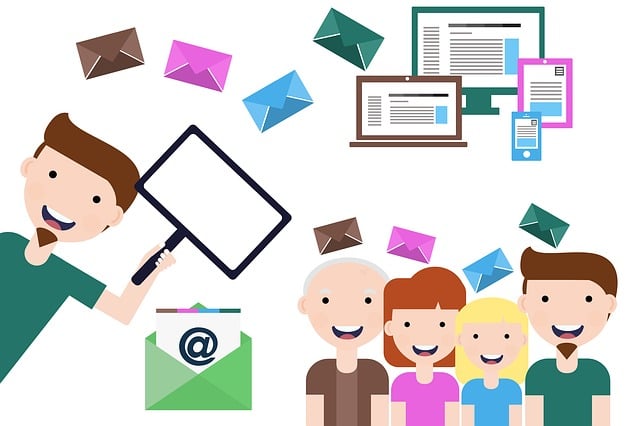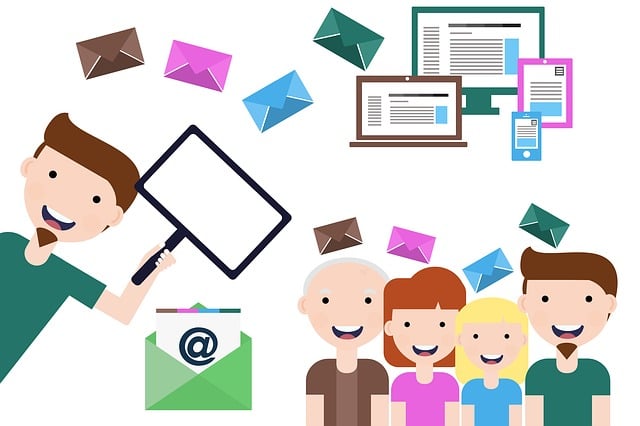Are you tired of seeing your content go unnoticed in the vast sea of online information? Don’t worry, you’re not alone. With so much content being created and shared every second, it can be incredibly challenging to get your message heard. That’s where email marketing and social media come into play.
These two powerful tools can help you cut through the noise and reach your target audience effectively. But which one is better for content promotion? In this article, we will explore the battle between email marketing and social media, and reveal the winner once and for all.
Get ready for some eye-opening insights as we compare their targeting capabilities, reach and visibility, personalization and customization options, conversion rates and return on investment, cost and resource requirements, as well as integration and collaboration possibilities.
So, sit back, relax, and let the data-driven analysis unfold. It’s time to find out whether email marketing or social media reigns supreme in the realm of content promotion.
Key Takeaways
- Email marketing offers personalized and direct communication, automation for segmentation, and higher ROI compared to social media.
- Social media provides powerful tools for reaching target audiences, a broader audience, and the potential for viral sharing.
- Integration and collaboration between email marketing and social media can reach a larger audience, increase brand visibility, drive traffic and generate leads, and amplify content impact.
- Both email marketing and social media require investment and ongoing costs, as well as time for campaign creation, content creation, community management, and analysis.
Targeting the Right Audience
To effectively target the right audience, you should consider utilizing email marketing as it allows for personalized and direct communication with potential customers. By leveraging automation, you can segment your email list based on demographics, interests, and purchase history, ensuring that your messages reach the right people at the right time.
Email marketing also offers the advantage of measuring effectiveness through metrics such as open rates, click-through rates, and conversions. These insights allow you to fine-tune your campaigns and improve your targeting strategy. In fact, studies have shown that email marketing generates a higher ROI compared to social media marketing.
However, it’s important to note that email marketing shouldn’t be the sole focus of your content promotion strategy. Transitioning into the subsequent section about reach and visibility, social media platforms offer a broader audience and the potential for viral sharing.
Reach and Visibility
When considering the reach and visibility of your content, it’s important to analyze both email marketing and social media.
Email marketing offers the advantage of high deliverability and open rates, ensuring that your message reaches your intended audience.
On the other hand, social media provides a wide reach and the potential for high engagement, as users can easily share and interact with your content.
By utilizing both channels effectively, you can maximize the visibility of your content and ultimately drive more traffic and conversions.
Email deliverability and open rates
Despite the rise of social media, email marketing still reigns supreme when it comes to ensuring high deliverability and open rates. As the saying goes, "the money is in the list."
Email engagement remains a powerful tool for content promotion, as it allows you to directly reach your target audience. Unlike social media, where your posts can easily get lost in the sea of content, emails have a higher chance of being seen and opened by your subscribers. Additionally, spam filters have become more sophisticated, ensuring that only relevant and valuable emails make it to the inbox.
By focusing on building a strong email list and crafting compelling subject lines, you can increase the likelihood of your content being seen and engaged with. However, it’s important to note that social media has its own benefits in terms of reach and engagement, which we will explore in the next section.
Social media reach and engagement
Although social media has its own advantages, such as wider reach and increased engagement, it is important to consider the role it plays in promoting content.
Social media algorithms often prioritize certain posts over others, making it difficult for your content to reach your entire audience. Additionally, with the constant updates and changes to these algorithms, it can be challenging to keep up and maintain consistent visibility.
On the other hand, email marketing allows you to have a more direct and personal connection with your audience. By building an email list, you have a higher chance of reaching your target audience and ensuring that your content is delivered to their inboxes. This not only helps with content promotion but also contributes to email list growth.
However, to further enhance your content promotion strategy, it is important to consider personalization and customization.
Personalization and Customization
Personalization and customization can enhance the impact of content promotion, tailoring the message to individual preferences and creating a more engaging experience. Effective segmentation allows marketers to divide their audience based on specific criteria, such as demographics, interests, or past behavior, ensuring that the content reaches the right people. This targeted approach increases the likelihood of capturing the attention of the audience and driving them to take action. Additionally, tailored messaging speaks directly to the needs and interests of the recipients, making them more likely to engage with the content and share it with others. According to a study by Experian, personalized emails have 29% higher unique open rates and 41% higher click-through rates compared to generic emails. Incorporating personalization and customization into your content promotion strategy can significantly improve your results. Transitioning to the next section, let’s explore how personalization impacts conversion rates and ROI.
Conversion Rates and ROI
To maximize your results, you need to understand how conversion rates and ROI are influenced by implementing personalized and customized strategies.
When it comes to conversion optimization, email marketing has a clear advantage. Studies consistently show that emails have higher conversion rates compared to social media. This is because email campaigns allow for targeted messaging and personalized content, which resonates better with the audience. Additionally, email marketing allows you to track and measure success more accurately, providing valuable insights into what strategies are working and where improvements can be made.
This data-driven approach empowers you to make informed decisions and optimize your campaigns for better results. So, if you’re looking to maximize your conversion rates and ROI, email marketing should be a key part of your content promotion strategy.
Now let’s explore the next section about ‘cost and resources’.
Cost and Resources
Implementing a successful content strategy requires considering the cost and resources involved. When it comes to budget allocation, email marketing and social media have different requirements.
Email marketing typically requires an initial investment in an email marketing platform, as well as ongoing costs for email automation and list management. On the other hand, social media platforms are usually free to use, but paid advertising can significantly increase reach and engagement.
In terms of time management, email marketing requires time to create and schedule campaigns, manage subscriber lists, and analyze results. Social media, on the other hand, requires consistent content creation, community management, and monitoring of analytics.
To effectively promote your content, it is essential to allocate your budget wisely and manage your time efficiently. This will ensure that you are maximizing your efforts in both email marketing and social media. Moving forward, integrating and collaborating these two channels can further boost your content promotion strategy.
Integration and Collaboration
Combining and working together, email and social media can enhance and amplify your content strategy. By integrating and automating your email marketing and social media efforts, you can ensure that your content reaches a wider audience and has a greater impact.
Here are four ways that integration and collaboration between email and social media can benefit your content promotion:
-
Reach a larger audience: By sharing your content on both email and social media platforms, you can reach a larger audience and increase your chances of engagement and conversion.
-
Increase brand visibility: Consistent messaging across email and social media platforms helps to increase brand visibility and recognition.
-
Drive traffic to your website: By including links to your website in both email and social media posts, you can drive traffic and generate leads.
-
Measure success: By tracking metrics such as click-through rates, open rates, and engagement on both email and social media, you can measure the success of your content promotion efforts and make data-driven decisions to improve your strategy.
Frequently Asked Questions
How can I effectively target the right audience for my email marketing campaigns?
To effectively target the right audience for your email marketing campaigns, focus on audience segmentation. By dividing your audience into smaller, more specific groups based on demographics, interests, or behaviors, you can tailor your messages to their specific needs and preferences.
This targeted approach increases the effectiveness of your campaigns, resulting in higher open and click-through rates. By analyzing data on your subscribers’ interactions, you can refine your segmentation strategy and further optimize your email marketing efforts.
What strategies can I use to increase the reach and visibility of my social media content?
To increase the reach and visibility of your social media content, start by creating engaging visuals that catch the eye and encourage interaction. Incorporating visually appealing graphics or videos can significantly increase engagement rates.
Additionally, leverage influencer partnerships to expand your content’s reach to a wider audience. Collaborating with influencers who align with your brand can help boost visibility and credibility.
By implementing these strategies, you can effectively maximize the impact of your social media content.
Is it possible to personalize and customize email marketing campaigns for individual recipients?
Yes, it’s absolutely possible to personalize and customize email marketing campaigns for individual recipients. By doing so, you can reap numerous benefits such as higher open rates, increased engagement, and improved conversion rates.
Personalization benefits include creating a sense of connection and relevance for the recipient, leading to higher chances of them taking the desired action. Customization techniques, such as segmenting your email list and using dynamic content, allow you to tailor your messages to specific preferences and behaviors of each recipient.
How can I measure the conversion rates and ROI of my social media content?
Measuring the effectiveness and analyzing the results of your social media content is crucial for understanding its impact on your business. Think of it like a puzzle; each piece represents a different metric that informs your overall picture of success. By tracking conversion rates and ROI, you can determine which content strategies are driving actual results.
This data-driven approach allows you to make informed decisions and optimize your social media efforts for maximum impact.
What are the cost and resource implications of implementing an email marketing strategy compared to a social media strategy?
Implementing an email marketing strategy generally requires a higher initial investment compared to a social media strategy. Costs include building an email list, designing templates, and investing in email automation tools. However, the long-term cost implications are often lower as email campaigns have a higher ROI.
In terms of resource allocation, email marketing requires dedicated staff for content creation, list management, and campaign optimization. Social media, on the other hand, requires continuous monitoring, content curation, and engagement with followers.
Conclusion
In conclusion, when it comes to content promotion, both email marketing and social media have their strengths.
While social media offers a wider reach and visibility, email marketing allows for better personalization and customization.
In terms of conversion rates and ROI, studies show that email marketing outperforms social media.
Moreover, email marketing tends to be more cost-effective and requires fewer resources.
However, integrating both strategies and fostering collaboration can maximize the effectiveness of content promotion.
So, why choose one when you can have the best of both worlds? Combine the power of email marketing and social media to elevate your content promotion game.







